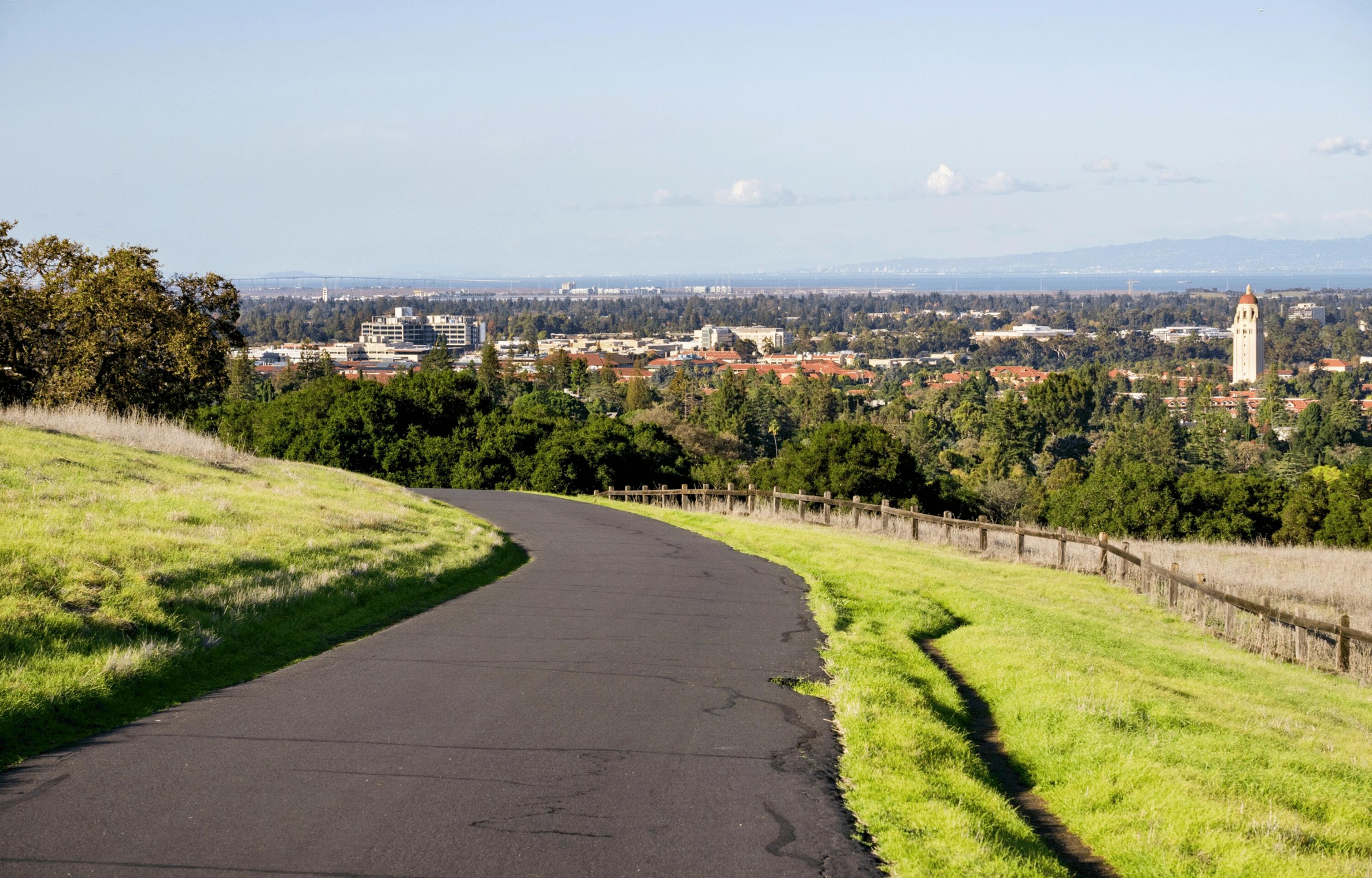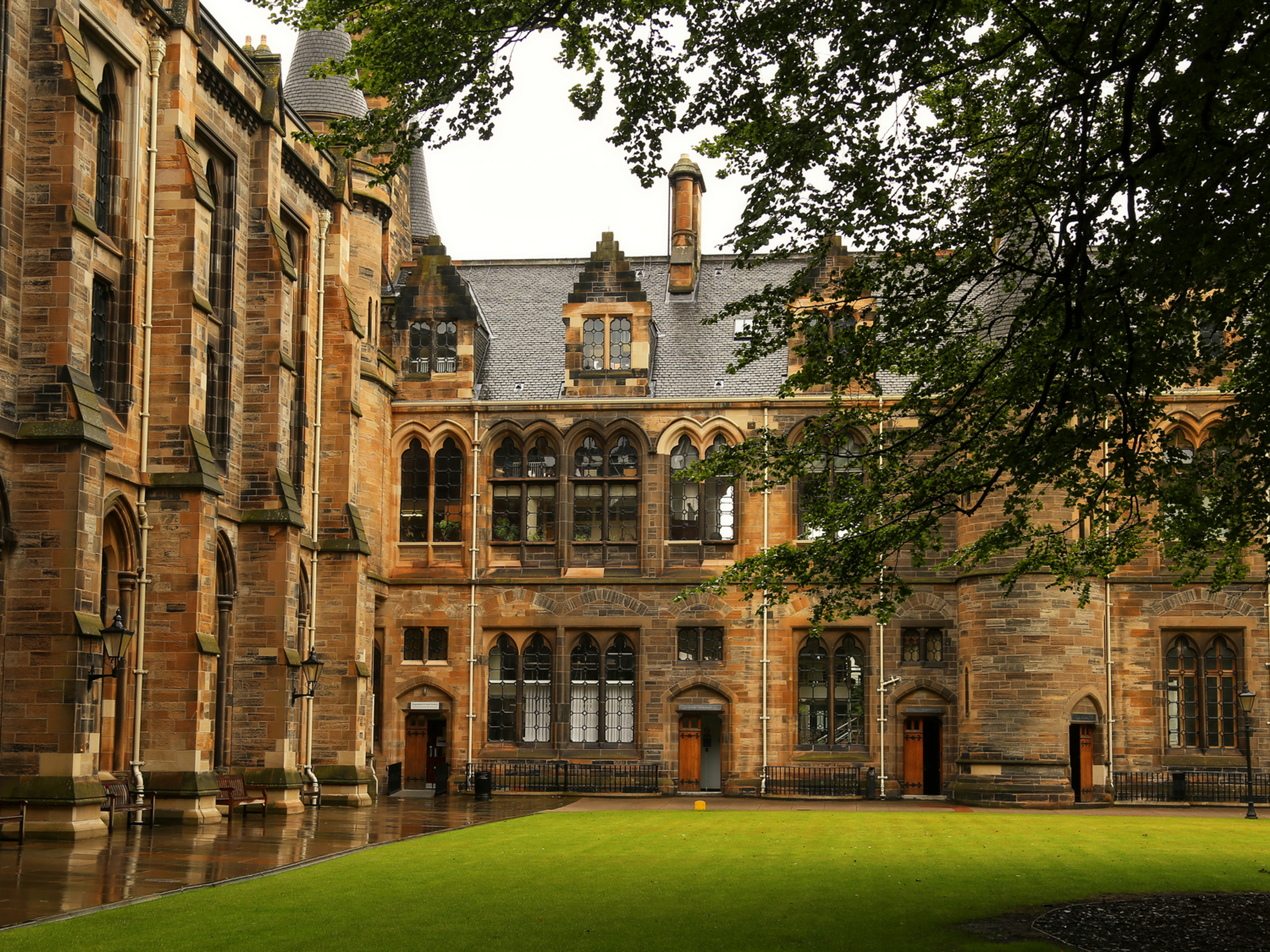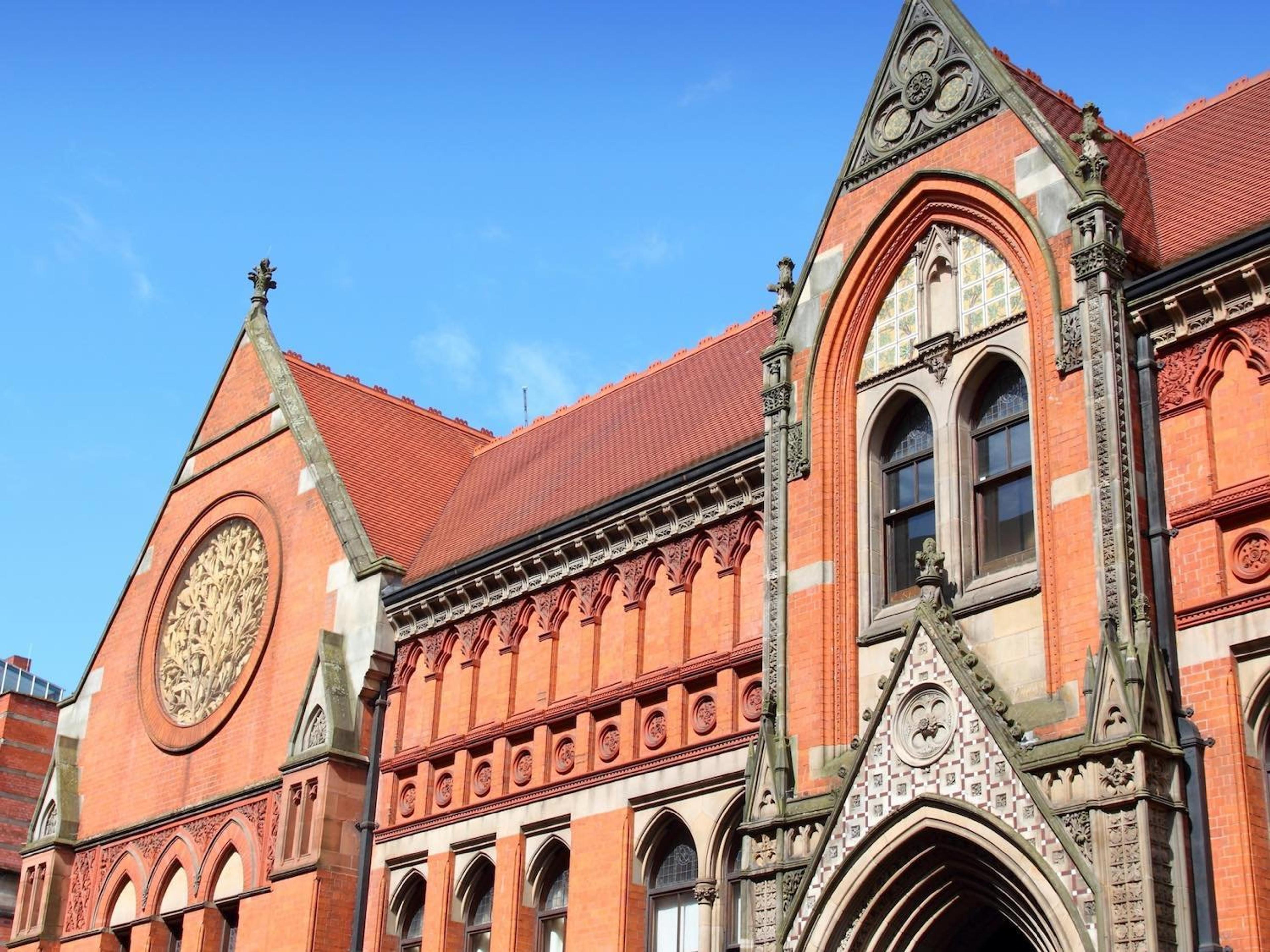Stanford MSx Program: Application, Curriculum, and Pros & Cons
Discover everything you need to know about the Stanford MSx Program, including what types of candidates the AdCom is looking for, what to expect in the program, and tips for applying, from its former program director.

By Mike H.
Posted July 1, 2025
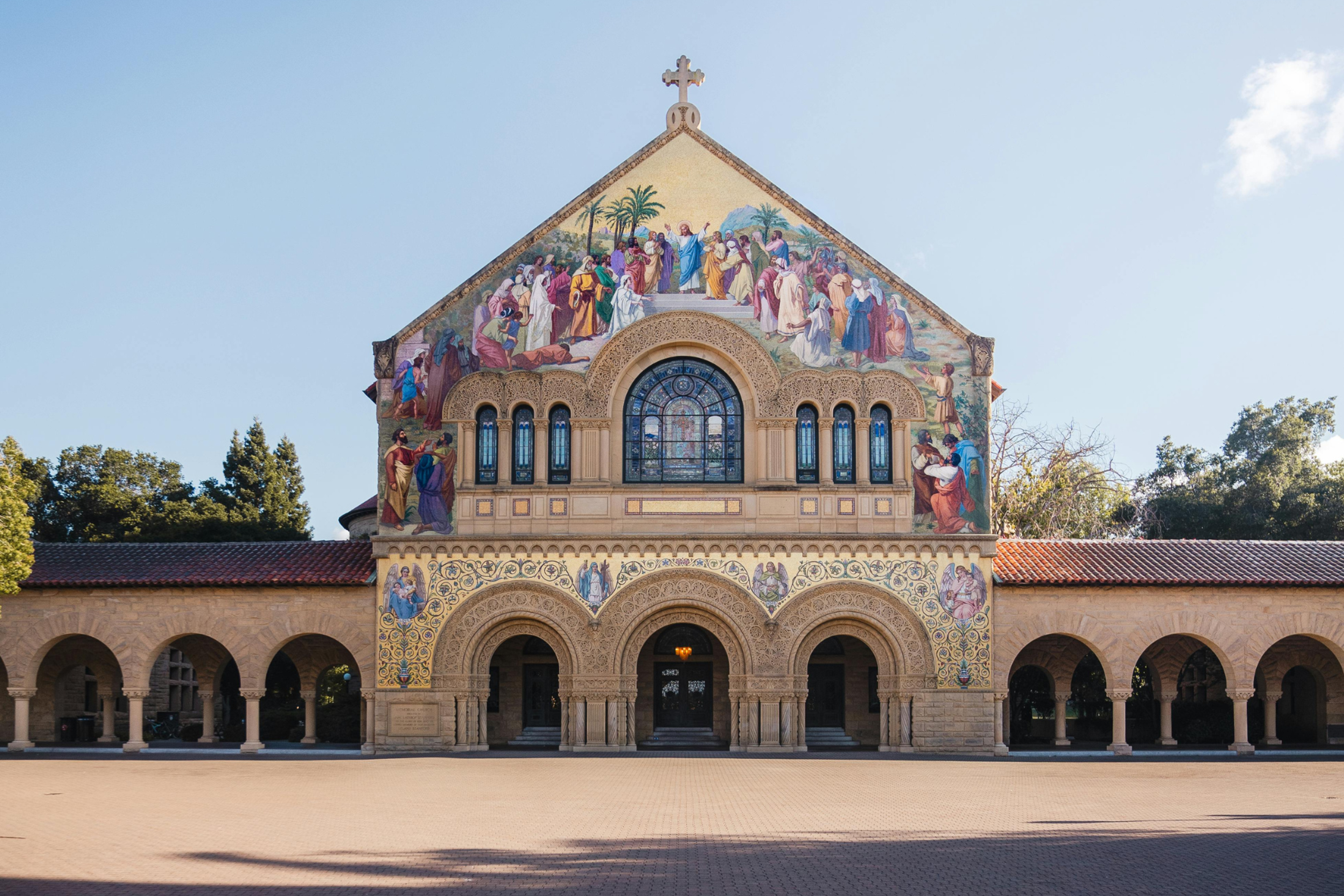
Table of Contents
As a former director of the Stanford MSx Program at the GSB, I can’t offer an objective perspective about the program, but I can give an honest and well-informed one. Having spent a decade overseeing admissions and the program itself, I developed a deep affinity for MSx students, who were remarkable. At the same time, I also got to hear every criticism and complaint from prospects, students and alumni, and I dealt with the internal GSB politics when it came to the program itself. Having left Stanford, I’m free to share less filtered insights and (hopefully balanced) opinions that might be helpful if you are considering the program.
The Stanford MSx Program is a fairly unique offering, in that it provides the immersion and intensity of a traditional full-time MBA experience at a top school, but targets more experienced candidates that would more typically pursue a part-time EMBA. It is a bit of an accidental program at the GSB today; it was established in 1957 with a very different student profile in mind, and has gone through multiple transitions to its current format. Unlike business schools that have many degree programs, the GSB has only three (MBA, PhD and MSx), and it hasn’t launched a new degree since the MSx program began offering an MS in Management degree. As much as people associate Stanford with innovation, in this respect it has been very cautious and conservative.
What does this mean for MSx students? It’s a blessing and a curse. On the one hand, some truly exceptional people that would not be a fit for the two year MBA program, or who might not have two years to attend school, can get an incredible GSB education that is a great fit for their situation. This is a relatively select segment in the overall business education market, but if it happens to be you, Stanford MSx is (I believe) the best program in the world – even better than the Stanford MBA. On the other hand, the program’s branding challenges, given its atypical format and MS degree (rather than MBA), have held it back from more mainstream recognition and exposure. So the question is, are you among those that would be a great fit?
In this article, I’ll dive into various aspects of the Stanford MSx Program, including its application process, curriculum, and the pros and cons of pursuing this program.
What is the Stanford MSx Program?
Let’s cover the boilerplate. The Stanford MSx Program is a one-year, full-time master’s degree offered by the Stanford Graduate School of Business. Tailored for experienced professionals, it combines rigorous coursework, leadership development, and immersive networking to accelerate career growth. With access to Stanford’s world-class faculty, innovation ecosystem, and a diverse cohort, MSx participants refine their strategic thinking, hone managerial skills, and expand professional opportunities on a global scale.
Unique Features of the Stanford MSx Program
Relative to the Stanford MBA Program, which is six quarters over two years (21 months), with a summer internship opportunity, the MSx is four quarters over one year (12 months) without any break for an internship. This format works well for someone that wants to minimize the opportunity cost of being in school, and who feels confident enough about their next career step that they don’t need the additional time or an internship. It is less coursework overall, but there are diminishing returns to being in school beyond one year, and many Stanford MBA students are ‘checking out’ by the end of their GSB experience, so you may find that four quarters is a better value proposition.
The GSB focuses on general management, which means, as with the two-year MBA program, one of the standout features of the Stanford MSx Program is its immersive and interdisciplinary approach to learning. The core curriculum is a more streamlined version of the MBA core curriculum. This is good, because GSB students tend to prefer taking electives, so fewer core classes means more time in that ecosystem at the GSB and across Stanford. At the same time, the core classes are where MSx students really leverage their cohort experience. MSx core class sizes are smaller than in the MBA core, and faculty tend to invite more discussion, since students bring more managerial experience.
As much as Stanford MBAs talk about getting to know their 425 classmates, the MSx students really get to know the 80 or so students in their class, who are drawn from diverse regions and industries. By the end of the year, it creates an incredible professional network and dozens of deep friendships. Most students live on campus for the year, including those with partners and families, creating a very tight sense of immersive community. Social events have the feel of extended family reunions, with partners and children of students generally feeling welcome and included. By contrast, MIT’s Sloan Fellows MBA, which many see as the closest alternative to the MSx Program (more on that later), doesn’t offer on-campus housing, which many MIT students have told me made it harder to build the sense of camaraderie they encountered at Stanford.
In the classroom, this unique blend of perspectives and experiences enriches the educational experience and encourages innovative thinking. In addition to its diverse student body, the GSB employs essentially the same blend of rigorous coursework, real-world case studies, and experiential learning opportunities offered in its two-year MBA program, with slight variations. This multifaceted approach ensures that students gain practical insights and skills that are directly applicable to their careers. By engaging in hands-on projects and simulations, participants can apply their knowledge in real-world scenarios, further enhancing their learning experience.
Furthermore, the Stanford MSx Program benefits from its close integration with the Stanford MBA Program within the GSB. MSx students have access to the same world-class faculty, almost all the same GSB electives, student clubs, resource centers like the Center for Entrepreneurial Studies and Center for Social Innovation, and the broader Stanford community, enabling them to explore and leverage the rich intellectual capital offered by Stanford. Outside of core classes, MSx students are essentially studying and participating alongside MBA students in all aspects of the GSB experience, with only a few exceptions. As a result, the fact that the Stanford MBA program draws incredible talent and attention, as well as guest speakers, gives MSx students access to people and opportunities they would not likely get in even the most prestigious EMBA program. This collaborative ecosystem provides a unique platform for networking, mentorship, and lifelong learning to students that can leverage it.
Who Gets Into the Stanford MSx Program?
Here is the data from the most recently published class profile:
- # of Applicants: 557
- # of New Students: 76
- Average Years of Work Experience: 12.5
- Range: 8-23
- Women: 38%
- Students of Color: 64%
- International: 63%
- # of Countries Represented: 26
- First-Generation: 30%
- Have Advanced Degrees: 54%
- Hold Executive Titles: 44%
- Work for Companies With >10,000 Employees: 45%
- Top Industries:
- Finance
- Technology
- Government/Military
- Manufacturing
- Consulting
- Median EA: 158
- Range: 152-165
- Median GMAT (Traditional): 720
- Range: 690-750
- Median GRE: 162 (Verbal); 166 (Quant)
- Range: 157-166 (Verbal); 160-169 (Quant)
A few things to know about the MSx applicant pool. There are three other programs where MSx applicants are most likely to also apply, in the following order: Stanford MBA, MIT Sloan Fellows MBA, and Harvard MBA. MIT’s program is the closest alternative, in terms of program format, as it is one year, full time, and participants must have at least 10 years of work experience, but some might be surprised that the Stanford MBA is still the top alternative. It shouldn’t be surprising, since the GSB allows a joint application option, which makes it easy to apply to both the MBA and MSx program. The other reason, though, is that the two programs are actually quite similar. The core curriculum has a lot of overlap, they allow access to the same pool of electives, they share the same faculty, the same school culture, facilities, and ecosystem within the GSB and across Stanford University. I often told MBA applicants that were eligible to apply to the MSx program: if you really want to come to the GSB, but don’t get into the MBA Program, your second choice should be the MSx Program, not HBS or another school. It doesn’t grant the MBA degree, and it is optimized differently than the MBA program, but it still offers a true full-time, fully immersive GSB academic experience, which no other school can offer.
MIT’s Sloan Fellows MBA is the second biggest competitor. Historically, when applicants were admitted to both programs, most chose Stanford. In recent years, MIT has really leaned in marketing their program as a ‘one-year MBA’, and I did see that have some impact, such that some would choose MIT over Stanford. Personally, I think choosing on the basis of the degree is short-sighted, but recognize it’s an issue many consider.
Not a lot of MSx applicants are applying to EMBA programs. Largely, it is a group that has decided it wants full-time immersive education, but recognizes that a traditional 2-year MBA might not be an ideal fit–either because they are deemed too old (admission rates drop considerably for applicants with 8+ years of work experience in traditional MBA programs), because they don’t want to take two years out of work, or because they want a cohort with more maturity and experience.
Stanford MSx Program Application
I have a lot of thoughts and advice for applicants, but only so much can fit here, and a lot can depend on individual context, so I’ll cover the basics. You’ll need to reach out to me for more tailored advice.
The Stanford MSx Program is competitive and attracts talented individuals from diverse backgrounds, with admission rates in recent years typically ranging between 15-20%. The application process is designed to select candidates who have the necessary skills, experience, and potential to excel in the program.
Eligibility for the Stanford MSx Program is based on several criteria. Applicants must have a minimum of eight years of work experience, preferably with solid experience in managerial or leadership roles. Historically, the median work experience for students is 13+ years with a range from 8 years to 30+ years. This requirement ensures candidates have a solid foundation of professional experience to contribute to the program's dynamic learning environment.
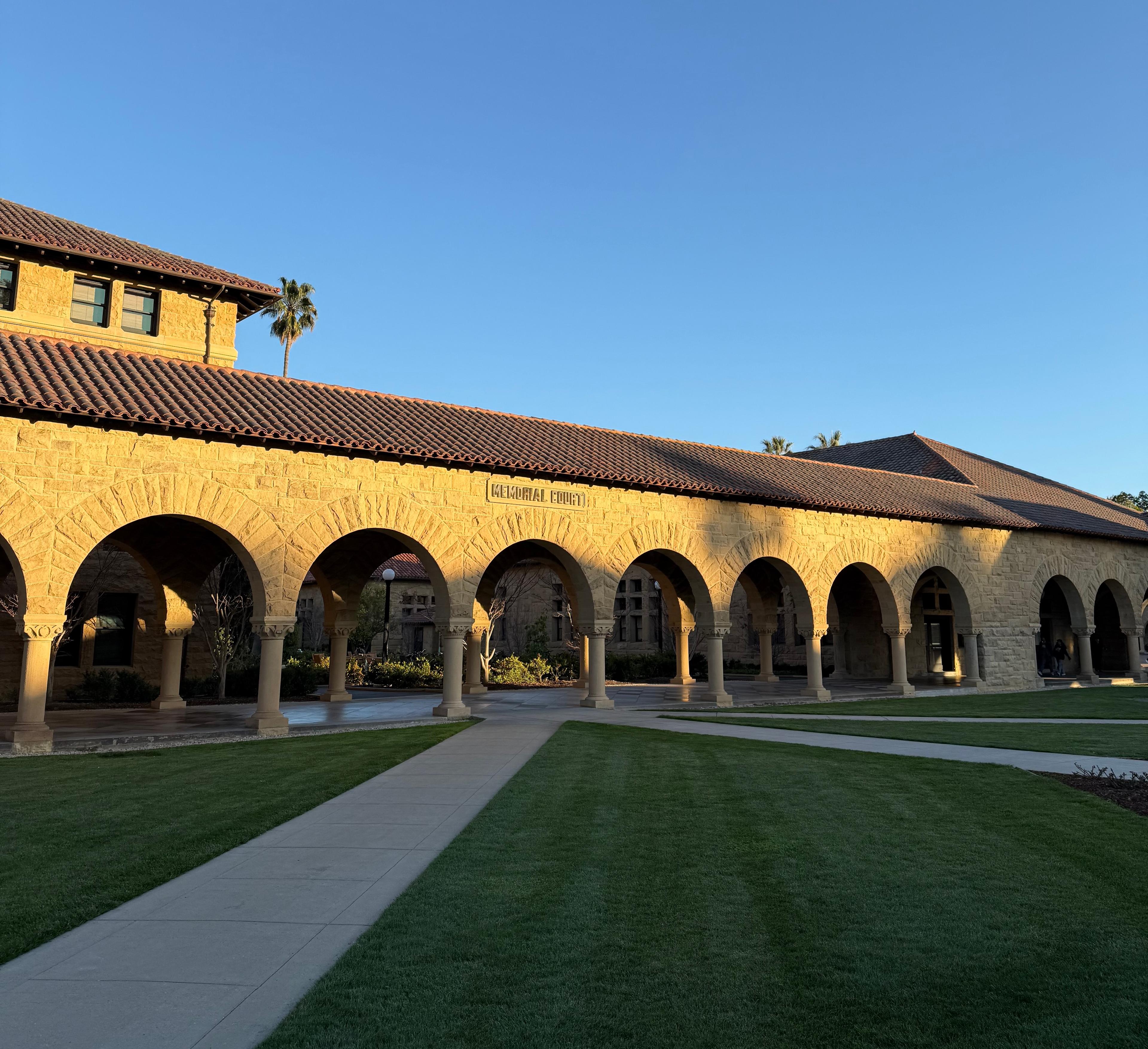
Otherwise, the program selects for the same overall criteria the GSB uses for its MBA applicants: intellectual vitality, demonstrated leadership potential, and personal qualities and contributions. The program values diversity and seeks candidates who can bring unique perspectives to the classroom.
The admissions committee wants to assure its students will make successful transitions after the program, and because a job search is often more challenging for mid-career professionals, the MSx admissions team places greater emphasis on this than their MBA colleagues do. They will evaluate whether an applicant expects to return to a previous employer or industry (what they call a ‘career accelerator’), try to make a career pivot, or pursue an entrepreneurial opportunity. In each case, they’ll assess the degree to which the candidate has strong prospects and a clear rationale for their plans, so it is important to give this adequate thought before applying. It is not enough to know that you want to make a change. You have to have a clear sense of direction in order to make the most effective use of the program.
Strong academic credentials are important, and once admitted, students will be judged on the same standards as Stanford MBA students in the classroom (when graded on the same curve in mixed electives with MBA students, MSx students have performed just as well). That said, the bar in admission is not as high as it is for the MBA program. Because students have more work experience and the program is less selective, undergrad GPA and test scores averages are lower than the MBA program, even if still quite high compared with other schools. If you have weak spots in your academic record, demonstrating a strong work ethic and intellectual capability based on more recent work experience can offset this concern to a degree.
The ability to thrive in a demanding and fast-paced learning environment is crucial, as the Stanford MSx Program is known for its intensive and immersive nature. Essentially, you will have access to the full ecosystem of human capital and learning that is Stanford GSB and Stanford University for one year. Every day will test your ability to overcome FOMO and focus on the opportunities that have the most to offer, which will be many. It is a good challenge to have, but it is a challenge nonetheless, and the admissions team will consider this.
Finally, the admission team wants to make sure that admits are coming with appropriate expectations. Especially for applicants that apply jointly to the MBA and MSx program, they will want to make sure you really appreciate the value proposition of the MSx program, rather than seeing it as a consolation prize if denied from the MBA program. Every year, we would have a few students that just couldn’t let go of the idea that they really wanted to be in the MBA program, and this wasn’t good for them, nor their cohort. You need to take the MSx Program on its own terms, and if you do, there’s no reason it can’t be a terrific experience. Some can’t, and they may have valid reasons, but it’s important to be honest about this with yourself, so you don’t waste your time or cause unnecessary friction by pretending to want something you don’t.
Required Documents and Application Components
The Stanford MSx application requirements include:
- Personal Information
- Professional Experience and Goal
- Resume
- Essays
- Test score - GMAT, GRE, or EA
Note that applicants are required to submit GMAT, GRE, or EA scores. These standardized tests provide an objective measure of the applicant's aptitude and readiness for the program. Stanford does not offer test waivers for the MSx program.
Stanford MSx Application Deadlines
Like with MBA deadlines, there are three rounds for the MSx program. The earlier you apply, the better your chances, as there are more spots available. However, if delaying your application to a later round significantly improves your application, then you may consider doing so. Read more about application rounds here.
For the 2024-2025 application cycle, the Stanford MSx deadlines are as follows:
- Round 1: October 1, 2025, by 4:00 PM PT
- Decision notifications released in early December 2025
- Round 2: January 7, 2026, by 4:00 PM PT
- Decision notifications released in early April 2026
- Round 3: February 12, 2026, by 4:00 PM PT
- Decision notifications will also be released in early April 2026
Once the application is submitted, the admissions committee carefully reviews each application to assess the applicant's qualifications, potential, and fit with the program. This thorough evaluation process ensures that only the most qualified candidates are selected for the Stanford MSx Program.
Stanford MSx Essays
The essays required for the Stanford MSx program are almost the same as those required for the general Stanford GSB MBA application, with one small twist. The two primary prompts for 2024-2025 are:
- What matters most to you, and why?
- For this essay, we would like you to reflect deeply and write from the heart. Once you’ve identified what matters most to you, help us understand why. You might consider, for example, what makes this so important to you? What people, insights, or experiences have shaped your perspectives?
- Why Stanford MSx, and why now?
- Describe your aspirations and how your Stanford MSx experience will help you realize them. Why is this the right time for you to pursue your master’s degree at Stanford GSB?
For the length and format, Stanford instructs: "Both essays combined may not exceed 1,000 words. We recommend up to 650 words for Essay A and up to 350 words for Essay B. We often find effective essays written in far fewer words. Use a minimum of 12-point font size."
There is also one required short answer question geared toward your career aspirations and one optional short answer question on impact.
- (Required) Short Answer Question: Because the Stanford MSx program is for mid-career managers, it is valuable to have clear career goals in mind when you begin. Tell us about any specific career goals you have, and how you believe the Stanford MSx Program, combined with your experience, education, or background, will help you achieve them.
- (Optional) Short Answer Question: Think about a time in the past few years you’ve created a positive impact, whether in professional, extracurricular, academic, or other settings. What was your impact? What made it significant to you or to others?
Here are several other resources on the Stanford essays:
- Stanford GSB MBA Essays: Prompts, Tips, & Examples
- Craft a Powerful Essay for Stanford GSB: What Matters Most & Why?
- 3 Things You Need for Successful Stanford MBA Essays
- 5 Expert Tips for the "Why Stanford?" MBA Application Essay
Stanford MSx Program Curriculum
Core Courses and Electives
The curriculum of the Stanford MSx Program is designed to provide students with a solid foundation in business fundamentals while also offering flexibility to tailor their learning to their specific career goals. The program includes a mix of core courses that cover essential business disciplines such as finance, strategy, and operations, as well as a wide range of electives that allow students to explore areas of interest in greater depth.
The quarter-by-quarter curriculum breakdown is as follows.
Quarter 1: Only Core Classes
- Accounting
- Finance
- Negotiations
- Leadership
- Economics
- Organizational Behavior
Quarter 2: Core Classes and Electives
- Strategy
- Marketing
- Political Economy
- Operations
- Data & Decisions
Quarters 3 & 4: Only Electives
- Choose from 120+ electives at the GSB and other Stanford schools, including Law, Medicine, Humanities, Education, Sustainability, and Engineering
There is a leadership development 360 assessment and a coaching component that is delivered alongside courses, as well as tons of extracurriculars available to students, including career service workshops, speaker series, many targeted programs, and 60+ student clubs. See more info on the academic experience here.
Furthermore, the program offers opportunities for students to engage in hands-on projects, case studies, and simulations, enabling them to apply their knowledge and skills in practical business contexts. These experiential learning opportunities provide students with valuable insights into the complexities of real-world business scenarios and help them develop the problem-solving and decision-making skills necessary for success in their careers.
Learning Approach and Teaching Methodology
The Stanford MSx Program employs a highly interactive and experiential learning approach. Classrooms are transformed into collaborative spaces where students actively engage with faculty and peers, sharing diverse perspectives and tackling real-world business challenges.
Unlike traditional lecture-based formats, the program emphasizes active participation and encourages students to contribute their unique insights and experiences. Through lively class discussions and group work, students learn from one another and gain a deeper understanding of the subject matter. This collaborative learning environment fosters creativity, critical thinking, and effective communication skills.
In addition to traditional lectures, the program utilizes case discussions, group work, and guest speakers to provide students with a holistic learning experience. Case discussions allow students to analyze real-life business scenarios, identify key issues, and propose strategic solutions. Group work promotes teamwork and collaboration, enabling students to leverage the diverse skills and perspectives of their peers. Guest speakers, who are industry experts and thought leaders, share their practical insights and provide students with valuable industry perspectives.
Faculty members, renowned for their expertise and industry experience, employ innovative teaching methodologies to facilitate deep learning and critical thinking. They challenge students to think beyond the surface level and encourage them to question assumptions, analyze data, and develop well-reasoned arguments. By engaging students in active learning, the faculty creates an intellectually stimulating environment that fosters personal growth and professional development.
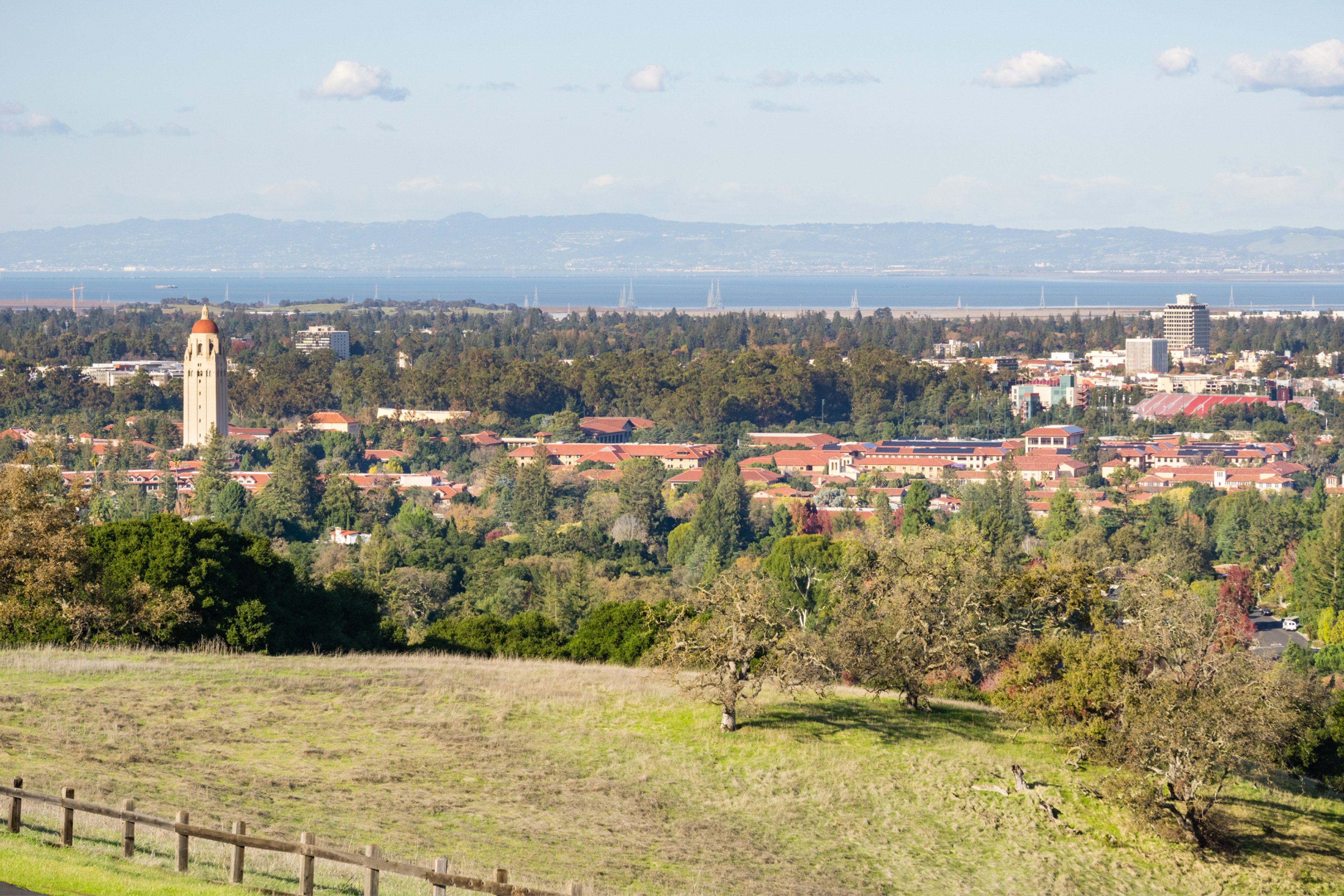
Pros & Cons of the Stanford MSx Program
Pros
1. Leadership Development
The Stanford MSx Program provides a platform for professionals to challenge and deepen their leadership capabilities. The program equips students with strategic thinking, analytical skills, and leadership development opportunities that are really once-in-a-lifetime opportunities. The courses you take, both core and elective, will provide a strong foundation, as well as tailored areas of focus, and many remarkable leadership courses are on the menu (e.g., Touchy Feely, Paths to Power, Strategic Communication, Managing Growing Enterprises, etc.). And spending a year with an MSx cohort provides a ‘learning by osmosis’ process, where you almost unconsciously pick up traits and lessons from classmates that come from diverse and remarkable leadership backgrounds. Graduates of the program have typically cited the transformational nature of the learning and the greater sense of confidence they develop as impactful leaders.
2. Relationship and Community Building
One of the most significant benefits of the Stanford MSx Program is the vast network of professionals that students gain access to. The program attracts high-caliber individuals from a wide range of industries, creating a vibrant and supportive community that extends far beyond the duration of the program. The connections made during the program often prove invaluable for career growth, mentorship, and collaborative opportunities. Ask yourself, how many truly strong friendships have you made since turning 30? You will make dozens that last for a long time in this program, and if you have a partner or family, these will be the type of friendships that include them, making it more special and lasting. While moving a family is disruptive, once you arrive, your partner and kids will likely have a very enriching experience, based on the feedback I received every year from students and their partners.
3. Unparalleled Access to the Stanford Ecosystem
As participants in the Stanford MSx Program, students have remarkable access to the extensive resources and facilities offered by the GSB and Stanford University. This includes many legendary courses and instructors, countless learning and networking opportunities on campus, the research centers and other Stanford schools (e.g., Engineering, Med, Law, Sustainability, the d.school, etc.), and the GSB’s remarkable alumni network. Students benefit from the expertise and guidance of world-renowned faculty and alumni who are leaders in their respective fields, and MSx students have the same level of access as MBA students if they tap it effectively. In short, relative to any part-time or exec ed options, it grants full access to the best that Stanford has to offer – for one year as a student, and then for a lifetime as a GSB alum.
4. Entrepreneurial Opportunities
Stanford is second-to-none when it comes to its entrepreneurial environment, and the MSx Program can offer a great opportunity for someone looking to focus on entrepreneurial opportunities mid-career. In addition to strengthening your leadership and general management capabilities, which is helpful for any entrepreneur, there are (literally) hundreds of courses and resources to support students who are exploring new ventures. Experiential GSB courses helped MSx grads launch companies like SoFi, Zum, and other unicorns around the world. Many GSB faculty appreciate the maturity and experience that MSx students bring to such courses, and students also benefit from the network of successful entrepreneurs and VCs (many of them alums) that regularly visit, teach, and network with students. If you want to use business school to become (or remain) an entrepreneur, MSx is a great choice.
Cons
1. High Tuition and Opportunity Cost
Pursuing the Stanford MSx Program requires a substantial financial investment. Professionals need to leave full-time employment (or step away) for the duration of the program, resulting in lost income—an opportunity cost that not everyone can comfortably shoulder. In addition to tuition, students often face living expenses in the Bay Area, which can be notably high. Most students choose to live on campus, which is generally cheaper than what is available off-campus, but depending where they are coming from, it can still be expensive. The tuition is higher than the MBA program on a quarterly basis, but the overall cost is lower because of the shorter duration, especially if that shortens the duration is shortened. Tuition is lower than most EMBA programs, but it can be more costly when factoring in lost salary. If you are an international student with a partner, keep in mind that your partner also cannot work if they enter the US on a partner visa.
2. Limited Career Support
Career services are provided by the GSB’s Career Management Center (CMC), the same group that works with MBA students. Providing career support to MSx students has long challenged the school, since most MSx students do not fit the typical ‘business student’ profile that campus recruiters are seeking. Older students in the MBA program have the same challenge, so it’s not program-specific. As a result, however, MSx students generally need to rely on a networking-based job search to find opportunities that are a good fit for their unique profile, and while the CMC will offer skill-building and advising, they are not as good at directly sourcing job opportunities for mid-career students. You’ll need to lead your own job search.
3. Less Recognized Than Stanford MBA
Although the MSx is part of Stanford Graduate School of Business, some employers are only familiar with the traditional two-year MBA. The single biggest complaint from students and alums is, “How do I describe what MSx is?” As the current Stanford President (Jon Levin) once said when he was Dean of the GSB, “It takes a paragraph to explain, rather than a sentence.” Some students turn this into an opportunity, using its unusual nature to spark curiosity and helpful conversations, but most students would rather just say, “I’m getting my MBA,” and be done with it. This can impact the experience students have, as within the GSB, there is a bit of a sense that the MBA students are the center of attention (not surprising, as they make up 90% of the student body), and it can cause anxiety during a job search if employers aren’t familiar with it.
4. Compressed Time
Because it’s a one-year, compressed format, students have less time to explore electives, delve deeply into extracurriculars, or participate in extended internships compared to traditional two-year MBA programs. This shorter timeline can mean fewer opportunities to pivot careers or experiment with new subjects. It means it is better suited for those who are focused and able to prioritize how they use their time relatively early, rather than attending school to ‘discover’ or ‘explore multiple options.’ My brother once said, “I want to go to business school when I know what I want to do, rather than go to figure it out.” That’s the right mindset for the MSx Program. (BTW, my brother never went to business school.)
Final Thoughts
I’ve seen the Stanford MSx Program from just about every angle. It’s not for everyone, and it’s not always easy to explain. But for the right candidate, it can be transformational. You’ll learn, grow, and build relationships that last a lifetime. And if you come in with clarity and purpose, you’ll get far more out of it than just a credential.
If you’re considering MSx and aren’t sure whether it’s the right fit or how to position yourself for it, I’d be happy to help. Book a free intro call with me. I work one-on-one with applicants to craft thoughtful, strategic applications that feel true to who they are and get results.
Read these next:
- The Different Types of MBA Programs—and Which One is Right for You
- What is an MBA Degree? An Expert Guide
- MBA Requirements: What You Need to Apply (and What Top Programs Really Look For)
- Stanford GSB MBA: Acceptance Rate, Deadlines, Cost, Requirements, & Program Overview
- The Top 25 MBA Programs—Acceptance Rates, Tuition, and More
Mike H. is the former Director of the Stanford MSx Program and Admissions. Over his 18 years at Stanford GSB — as an MBA student, leadership educator, and admissions lead — he read thousands of applications, traveled to over two dozen countries for recruiting, and worked closely with eleven cohorts of Sloan Fellows. Today, he works one-on-one with applicants to help them craft thoughtful, compelling applications grounded in clarity, purpose, and personal growth. Book a free intro call with Mike here.
FAQs
What’s the difference between the Stanford MSx and the regular Stanford MBA?
- The MSx is a one-year, full-time program for mid-career professionals with 8+ years of experience. It shares the same faculty, electives, and ecosystem as the MBA, but it awards a Master of Science in Management instead of an MBA.
Who is a good fit for the Stanford MSx Program?
- If you have 8–20+ years of experience, are ready for a career pivot or acceleration, and want a fully immersive, full-time GSB experience—but don’t want or need a two-year MBA—the MSx might be exactly right.
Can I apply to both the Stanford MBA and MSx programs at the same time?
- Yes. Stanford allows joint applications to both programs, especially in Round 2. If you're eligible for MSx but unsure which path is stronger, you can apply to both and let the AdCom decide.
Do I need to take the GMAT, GRE, or EA to apply to MSx?
- Yes. Stanford requires a standardized test (GMAT, GRE, or EA). There are no waivers, even for experienced applicants.
How do I explain the MSx degree to employers who don’t know what it is?
- It can take more than one sentence—MSx isn’t as widely known as the MBA. But you can frame it as a one-year, full-time management program at Stanford GSB, taken by experienced leaders and run by the same faculty as the MBA.

Written by Mike
5.0
(54)
Because I've been an educator (lecturer, coach, consultant, facilitator, program and admissions director) on the topic of leadership', I primarily think of myself as a student. I recognize great leadership takes many forms, and I believe leadership development starts with who you are, what you have to offer, and where you want to go, rather than an abstract idea of what a leader should look or sound like. As we said at the Stanford GSB, it begins not by asking, "what makes a great leader?," but by asking, "why would anybody follow me?" Keep this in mind when applying to school. Maybe there's an archetype of what the perfect applicant looks like, and there are obvious elements that strengthen any application, but the best schools want to recruit people of diverse backgrounds, talents, and perspectives. Rather than trying to fit a particular mold, show how much you would add to the overall mix--intellectually, socially, personally and professionally. In your application, you need to demonstrate why the faculty would value your unique input, why your classmates would learn from your unique experiences, and why the school would be uniquely proud to call you an alum. Having read many applications, I know that what most often stands out are the unexpected things, making an applicant memorable and authentic. Cookie cutter approaches rarely work. Half my career was spent at the Stanford GSB--first as an MBA student, later as Executive Director of the GSB's Center for Leadership Development and Research, and then Director of the Stanford MSx Program and Director of Admissions. I was brought in to the GSB to help oversee the launch of its MBA core leadership curriculum (Leadership Labs, Arbuckle Leadership Fellows, GSB Executive Challenge). Later, I helped revamp the Stanford MSx Program and oversaw admissions. Outside my academic and admissions work, I've had diverse roles: coached and facilitated leadership programs with community leaders and CEOs, worked as a strategy consultant, co-founded a microbrewery, served as a Peace Corps volunteer, been angel investor and advisor to startups. But while I've worn different hats, my approach to making an impact has generally been to help people with great potential to become better leaders. (...OK, maybe the microbrewery had different goals). My recent personal work is focused on the impact that AI is having on leaders, teams and organizations. How do you lead a team differently if many of the tasks that team needs to complete can be (or will soon be) automated with AI? How do you 'lead' a workforce that includes 'AI agents' that increasingly demonstrate forms of agency? How do you build learning organizations that can continually adapt and leverage AI as it improves, in ways that benefit both the organization and its people? These are some of the interesting challenges leaders will now face, and having better strategies to address them keeps me learning. Maybe when you're at business school, you can help me figure it out.
Mike has helped clients get into organizations like:
Stanford Graduate School of Business
Harvard Business School
Chicago Booth
MIT Sloan
The Wharton School (UPenn)



